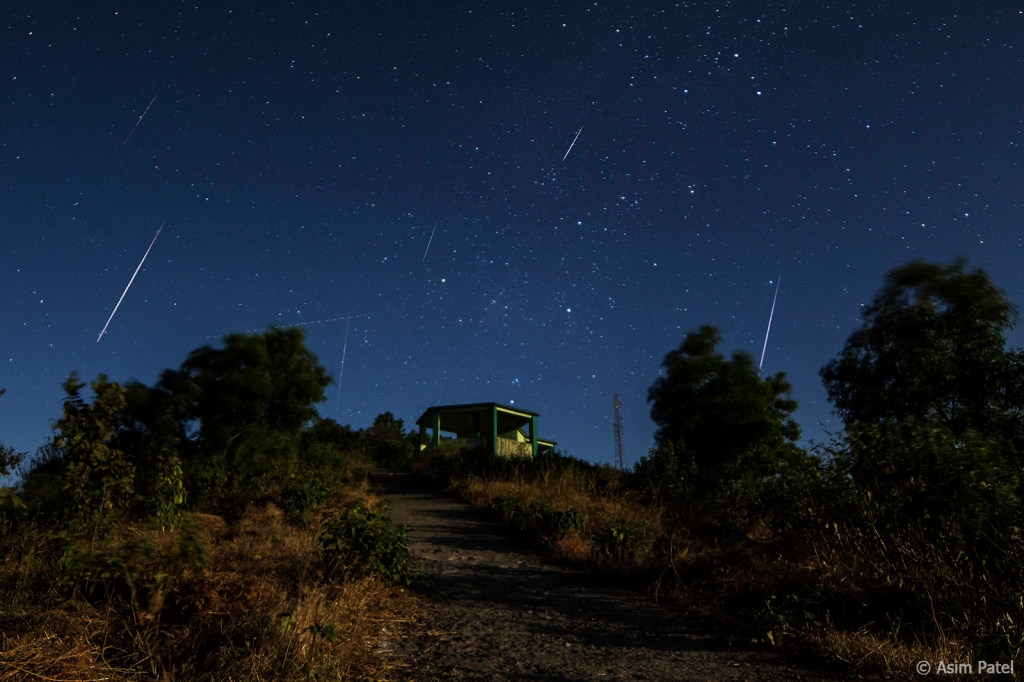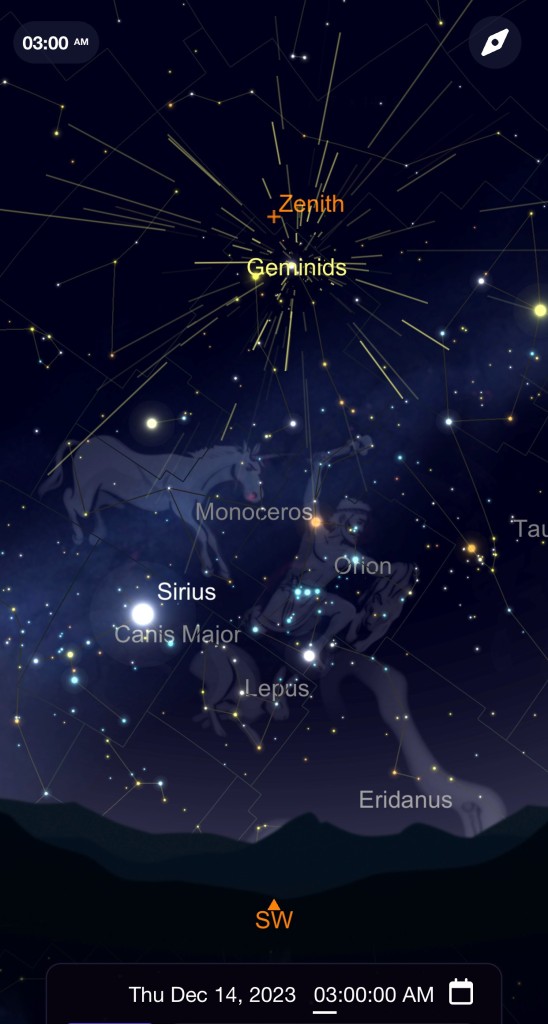Meteor showers are generally produced when the Earth passes through the remnant tail of a comet, often long after it has visited our inner Solar System. July’s Perseids are a gift from Comet Swift Tuttle (last close approach in 1995), the Eta Aquariids in May and Orionids in October come from the path Halley’s Comet (1986), and each November we see the Leonids courtesy of comet Tempel-Tuttle (1998). Only two major meteor showers are the product of something other than a comet, the Geminids being the most active, and visible throughout mid-December.

NASA’s Parker Solar Probe has been studying the sun since 2018 and holds the record of fastest human-made object, with a maximum speed of about 690,000 km/h or 430,000 mph. Its study of the sun has also provided valuable data on objects that orbit the sun, including the asteroid 3200 Phaeton. Classified as an Apollo asteroid for its Earth-crossing orbit, it is the largest and most studied asteroid passing closest to our Sun. The data from the Parker Solar Probe lends credence to the hypothesis that a much larger body was catastrophically torn apart by the Sun’s immense gravity, leaving behind 3200 Phaeton and at least two other large asteroids, and a debris field stretching for millions of miles through space.
The tails of comets leave behind icy dust particles that may create a meteor shower on Earth. By comparison, the detritus remaining from the cataclysmic event that created 3200 Phaeton is more rocky and often larger in diameter, offering bright, multi-colored meteoroids for your viewing pleasure. Peaking on the early morning hours of December 13th through 15th, this rubble collides with our atmosphere at speeds of 35 km/s or 22 miles per second, which while seemingly fast, is slower than many other meteor showers, allowing for long, bright streaks across the sky. The fireballs will mostly appear to emanate from the Gemini constellation, with this point of origin called the radiant.

Step outside in the early hours of Thursday 14 December. Look to the South Southwest, find the belt of Orion, and continue up to the bright twins Castor and Pollux. Bring a blanket for the cool late fall morning, and you could enjoy more than 120 shooting stars per hour on this dark, moonless night.